




By Rebecca Olds | rebecca.o@thecityjournals.com
Ashiny new addition to Bowman’s Market in Kaysville and the state of Utah is the introduction of “smart carts,” which aim to enhance the shopping experience for customers.
“We’re being, one of the first innovators and trying to get the momentum off the ground,” said Bowman’s owner, David Cook.
He described the technology as “a really, really functional piece of technology that makes shopping fun and smooth,” adding that it’s easier to use than a smartphone.
The smart cart at Bowman’s, known as the Caper Cart, is manufactured and distributed by Instacart. Although it has been tested in stores on the East Coast, such as Schnucks and Kroger, this marks its first implementation in Utah.
One of the key features of the Caper Cart is its ability to automatically apply coupons for customers without having to sign into an account, ensuring they get the best deals, with a built in touchscreen monitor.
Caper Carts automatically monitor items as they are placed in the basket and are even equipped with a scale for produce.
Instacart estimates that it makes the in-store experience about 18% faster than normal. In a recent

study conducted by the company, 83% of participants were receptive to smart cart technology “especially if it helps them save money and adhere to budgets,” said an Instacart spokesperson.
For each store, the carts are completely customizable down to color schemes, logos and other branding, with the ability to be set up in a store in only a day. They automatically update and have stacked charging stations to eliminate swapping out batteries.
“They are amazing,” said local business owner Maddie Larkin. “The fact that they automatically apply any deals or discounts on the items is a huge win.” Larkin, who owns Larklean, a local cleaning product company sold at Bowman’s, is one of many local entrepreneurs whose products the store supports, reinforcing its community-centered mission.
Cook says it “gamifies” shopping by beeping and flashing lights when items are scanned and placed in the cart.
It also serves as an additional form of self-checkout, with the only option for payment a credit card.
While standard shopping carts cost around $200 each, the new smart carts cost closer to $3,000 each. Bowman’s currently has around 80 of them in addition to the normal carts.
Continued page 8




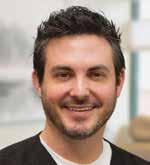




Jefferson Academy is the perfect choice for families seeking an educational experience beyond the ordinary. As a tuition-free public charter elementary school in Kaysville, Utah, Jefferson Academy is committed to providing a challenging and diversified curriculum that equips students with the tools they need for academic success.
Jefferson Academy prides itself on utilizing a strong academic curriculum firmly rooted in a history-focused framework. Smaller class sizes ensure personalized attention for every student, while leveled classes for math and reading cater to individual learning needs.
Discover the differences:
• Empowering students with leadership and life skills through the Leader in Me program to prepare them for the future.
• Leveled classes in math and reading to meet individual learning needs.
• Emphasis on American history to instill civic pride.
• Weekly STEM rotations in grades 1-6 for hands-on learning opportunities.
• Schoolwide Enrichment Model (SEM) pullouts for accelerated students to provide an added level of rigor and engagement.
• Weekly Spanish specials to broaden perspectives.
• After-school programs and activities to support families and extend learning beyond the classroom.
Unlock your child’s potential at Jefferson Academy and embark on a journey of intellectual growth, character development, and academic excellence. Enroll today to watch your child thrive in a supportive, enriching learning environment.






Comcast has contributed more than $5.2 million in cash and in-kind contributions to nearly 100 nonprofit partners in Utah, over the last three years. Organizations like Utah Schools for the Deaf and the Blind, the Alpine School District Foundation, Neighborhood House and United Way have all benefited from Comcast’s giving initiatives.
Project Up is a $1 billion program dedicated to closing the digital divide while connecting more people to the internet and creating opportunities for the next generation. Project UP supports nonprofit organizations that offer digital skills training, helping learners of all ages and skill levels to succeed in an increasingly digital world.
“With the support of Comcast, youth in our programs were able to get hands-on experience with advanced computers, guided exposure to the internet and new technologies, and about 3D modeling and other lessons that introduce youth to technology uses in many careers,” said Haylee Mathews, Boys & Girls Clubs of Salt Lake STEM Director. “The surprise of the 280 laptop computers to club members has been great for our youth to use as they learn about a variety of technology-related fields. Comcast has helped foster a culture and desire among our youth to learn more and pursue technology-related fields.”
Along with empowering communities, Comcast is helping to build a more equitable workforce by providing tech training and mentorship to underserved communities. Through partnerships with organizations like Per Scholas and CodePath, more people are mastering digital literacy.
Comcast also created more than 1,250 Lift Zones across the country, offering free WiFi access in community centers and recreation facilities. With nearly 40 Lift Zones in Utah, underserved families and neighborhoods can participate in accessing digital opportunities. Additionally, Comcast’s Internet Essentials program provides in-home broadband access for qualifying households.
Lily is an immigrant from Taiwan, assisted by the United Way of Utah County, one of Comcast’s partners. Adjusting to life in America has been challenging particularly when it comes to understanding technology. As an older woman, she said the learning curve was steep and she often felt overwhelmed in class.
“Then, during one of our sessions, I entered an old address from my childhood in Taiwan,” Lily said. “As the screen dis-
By Peri Kinder | peri.k@thecityjournals.com

played the familiar streets and landmarks of my youth, tears welled up in my eyes. It had been so long since I had seen the place where I spent my carefree days playing. It was a deeply moving experience, allowing technology to transport me back in time and mend a piece of my heart.”
Comcast’s corporate giving plays a crucial role in helping local nonprofits fulfill their missions. It also invests in future entrepreneurs through Comcast RISE, supporting the growth of 13,500 small businesses by providing monetary, marketing and technology grants to help entrepreneurs on their road to success.
By collaborating with community partners, Comcast has fostered digital literacy and work readiness skills, giving people across Utah access to the tools they need to navigate a digital world.
“Neighborhood House families live in areas that are digital deserts and many of our families do not have access to computers for their children,” said Neighborhood House Executive Director Jennifer Nuttall. “In this age of technology, that puts our school-age kids at a disadvantage, but Comcast has stepped in to provide laptops and connectivity, ensuring that all kids have the technology they need to succeed in school and beyond. This has been enormously impactful.”
Comcast is committed to addressing the digital divide with forward-thinking programs and technology. It aims to continue building Utah’s tech landscape through valuable partnerships, initiatives and digital support.
The City Journal is a monthly publication distributed directly to residents via the USPS USPS and our Bountiful office.
For information about distribution please email hello@thecityjournals.com or call our offices. Rack locations are also available on our website.
The views and opinions expressed in display advertisements do not necessarily reflect or represent the views and opinions held by Loyal Perch Media or the City Journals. This publication may not be reproduced in whole or in part without the express written consent of the owner. © 2019 Loyal Perch Media, Inc.
PUBLISHER
Bryan Scott | bryan.s@thecityjournals.com
EDITOR
Becky Ginos | becky.g@davisjournal.com
ADVERTISING EXECUTIVES
Mieka Sawatzki | mieka.s@thecityjournals.com
Lindsay Andreasen | lindsay.a@thecityjournals.com
Jason Corbridge | jason.c@thecityjournals.com
Ryan Casper | ryan.c@thecityjournals.com
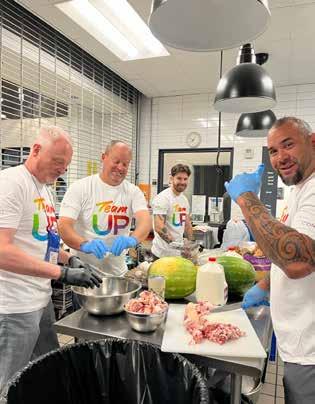
“Our commitment at Comcast to bridging the digital divide is evident through forward-thinking programs and innovative technology that empower communities across Utah,” said Deneiva Knight, External Affairs Director, Comcast Mountain West Region. “By partnering with nearly 100 nonprofit organizations and contributing over $5.2 million in cash and in-kind support over the past three years, we are dedicated to nurturing Utah’s tech ecosystem.
“Through initiatives like Project UP, a $1 billion program designed to connect more people to the internet and equip them with essential digital skills, we are laying the groundwork for a future where every individual has the opportunity to thrive in the digital age.”
For more information, visit Corporate.comcast.com. l
CIRCULATION COORDINATOR
Lydia Rice | lydia.r@thecityjournals.com 385-557-1022
Rack locations are also available on our website.
EDITORIAL & AD DESIGN
Ty Gorton
Anna Pro
DAVIS JOURNAL
270 S. Main, Suite 108 Bountiful, UT 84010
PHONE: 801-901-7962
MISSION STATEMENT
Our mission is to inform and entertain our community while promoting a strong local economy via relevant content presented across a synergetic network of print and digital media.
PUBLISHER
Designed, Published, & Distributed by

By Peri Kinder | peri.k@thecityjournals.com
Thisyear’s U.S. Capitol Christmas tree made a stop at Wheeler Farm (6351 S. 900 East) where visitors could celebrate the 74-foot Sitka spruce, harvested from Alaska’s Tongass National Forest. Its visit to Murray was one of 11 stops along the 4,000mile journey to the U.S. Capitol.
On Nov. 9, officials from Salt Lake County and the U.S. Forest Service threw a party for the tree’s arrival at Wheeler Farm with crafts, food trucks, educational booths and information about the tree’s journey. It was a chance for people to see the tree up close before it lights up the nation’s capitol.
“We are honored that the U.S. Capitol Christmas Tree [stopped] at Wheeler Historic Farm on its journey to Washington, D.C.,” said Salt Lake County Mayor Jenny Wilson. “Our community loves the holidays, and we’re excited to join state, federal and community partners in celebration of this 60-year tradition that helps kick off the holiday season.”
Although the national tree has been through Utah before, visiting Ogden in 2016, it’s the first time the tree has stopped in Salt Lake County. More than 500 people showed up at Wheeler Farm to sign the tarp covering the tree, receive commemorative pins and stickers from the event and visit with the team transporting the tree to Washington, D.C.
U.S. Forest Service Law Enforcement Office Trampus Barhaug was assigned to guard the tree at Alaska’s Tongass National
Forest while it was still standing and has accompanied it throughout the tour.
“Being the national tree, it’s the most important tree in the nation right now,” Barhaug said. “I love meeting all the people. Everybody’s been wonderful, both adults and kids. We thought it would be more for the kids, but the adults have been amazing. I’ll bet we’ve met 20,000 people already.”
Barhaug said schoolchildren in Alaska made more than 14,000 ornaments to decorate the tree and 41 handmade skirts were sewn by indigenous peoples in the state. The tree was scheduled to be delivered to the U.S. Capitol on Nov. 22.
Liz Sollis, communications director for Salt Lake County Mayor Jenny Wilson said there was lots of excitement around the event which was organized in collaboration with the U.S. Forest Service, Utah Highway Patrol, Salt Lake County Sheriff’s Office and other local partners. She was pleased with the turnout at Wheeler Farm and excited the county was able to be part of the national tour.
“We were really passionate about getting the word out because we know Salt Lake County is for everybody, so we wanted to make sure everybody knew about this,” Solis said. “Wheeler Farm always offers events and opportunities for learning and that’s what tonight is all about. It’s just a great opportunity for people to have fun and see the tree that’s going to be at the U.S. Capitol.”l



By Cindi Mansell | c.mansell@mycityjournals.com
Kaysville City determined they had a fire truck nearing the end of its usefulness for the city. The city had recently obtained a new fire engine that made this engine surplus unnecessary. The City’s purchasing policy dictates that disposition of items valued above $25,000 must be authorized by the City Council.
A staff memo said the city has no continued or foreseeable use for this property and believe it to be in the best interest of the public to dispose of the fire engine. The City Council unanimously approved a resolution

at its Nov. 7 meeting authorizing the sale of the fire engine.
The City Manager (or designee) was directed to conduct negotiations for the disposal and based on the niche market inherent to used fire apparatus, the City Manager is authorized to sell this equipment directly to another municipality without undergoing a formal bidding process (if the manager deems that to be the most prudent course of action). l
By Cindi Mansell | c.mansell@mycityjournals.com
records management is growing more complex each year. Requests for public records continue to grow in number as well as complexity, posing increasing challenges for governments to efficiently process and manage. These challenges are consuming resources that could be given to other essential projects.
sole discretion of the records officer, costs, and expected costs, may have to be paid in full prior to starting record request fulfillment.






Kaysville City staff recently realized that the fees charged for police reports and other documents were seriously undervalued and significantly lower than other jurisdictions. The city requested the need to update and clarify the fees for records requests to cover the cost to the city for administration and overhead. The proposed changes aim to reflect the true costs of fulfilling these requests and introduce separate fees for reports, photos, and videos; allowing requesters to choose only what they need.


The fee schedule included an increase from $5 to $10 for a Police Incident Report; it added new fees for requests for photos ($15 per case); and $50 per recording for audio or video recordings (e.g., dash cam, body cam or other recordings). Also, if the records request requires longer than 30 minutes to research and prepare copies, the city may charge the hourly wage of the lowest paid employee who, in the discretion of the custodian of records, has the necessary skill and training to perform the request. This shall be billed in quarter hour increments. In the
Cities such as Layton, Farmington, Bountiful, and Clearfield also charge similar fees to provide records to the public. Layton charges $10 per Police Incident Report while charging $30 for audio recordings. They also include a research, compilation and editing fee of $30 per hour (with a one hour minimum). North Salt Lake charges $15 for a Police report but notes it can be more if it is a bigger report (fee is based on length of report and redaction). Bountiful charges $10 per police incident report, Farmington $15, and Clearfield $16. In North Salt Lake, the cost for body cam videos is the cost of the lowest employee that can review the video (beginning at $20). Bountiful charges $50 for body cam video, Farmington $30, Clearfield charges for the report ($16) plus body cam plus $75 per hour for video redaction. Photos in North Salt Lake depend on the case but start at $15.
Government entities are having to scramble and be creative to fulfill public records requests and still conduct their day-to-day tasks. The City Council adopted a fee schedule amendment to update certain fees to better recover the cost that the city bears when fulfilling these requests. l

By Becky Ginos | becky.g@thecityjournals.com
Gunenthusiasts in Davis County can look forward to the shooting range reopening to the public possibly as soon as January. The county owned facility at 1649 E. 650 North in Kaysville was closed to the public in August by Wahsatch Shooters Association of Davis County, who were contracted to operate and supervise the general public’s use of the range. Since that time, the county commission and Davis County Sheriff’s Department (DCSO) have been working on a solution to get the range up and running again.
“It’s the same facility,” said Commissioner Lorene Kamalu. “The group that ran it stopped. We’d never planned for that.”
Commissioner Randy Elliott has been having subgroup meetings to figure out how to pick that back up, she said. “Now we know it was never specifically under anyone’s watch, just a trust with Wahsatch.”
There will be a change in structure, Kamalu said. “We know it will be a DCSO employee that will oversee the property. There will be all the same things for shooting up there.”
The upkeep was falling behind, she said. “We need to make improvements and maintenance on it. It hasn’t been maintained so great. The road is crumbled and the berms need work. Public Works will use their manpower and equipment to help with that.”
Member fees were supposed to be used for maintenance, said Kamalu. “In more recent years finances have not been happening according to the contract. We appreciate Wahsatch and the decades of what volunteers did up there.”
“The goal is to get the range open as soon as we can,” said DCSO Chief Deputy Andrew Oblad. “Hopefully in January the public can come back and use it. It’s a joint effort between the
DCSO and the county to maintain it and get it open. It won’t be run by a private organization like before.”
Prior to Wahsatch shooters getting out, range officers were up there when the public went, he said. “They were allowing admissions, making sure things were safe, etc. We’ll continue to use the same model. A range officer will be there to make sure it’s safe and managing how long people are in a bay.”
Law enforcement use the range for training so they’re often up there too, said Oblad. “There will be a portion for law enforcement and a portion for the public. We’ll rent some to shooting groups. There will be cameras to make sure that all of them are the only ones using it.”
Oblad said they’re working on getting agreements between who is using the range such as who is insuring it. “Do the groups who rent out the bays have insurance? The goal is to have an area for the public on Friday evening, Saturday and Sunday. They can go up and pay a fee to shoot.”
Change will be good, said Kamalu. “This is a priority. We want to do this while we have the chance to use recreation funds. It’s a super tight budget so it’s a top priority. We want it to be sustainable for all of those who use it. The goal is to keep it up like our golf courses. It should be used and loved by the community.”
There is work going on even this time of year, she said. “It’s been there for decades. Wahsatch never stopped working on it. We’re building on a great foundation by Wahsatch Shooters.”
Davis County Auditor Curtis Koch went through a tentative budget last week with the commission for approval, said Oblad. “Our goal is to use the money allocated by the county to make improvements before it opens up. It looks like it’s going that way.” l
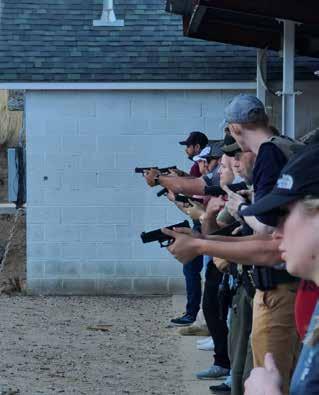

By Peri Kinder | peri.k@thecityjournals.com
Aswe move into the darker months, it’s important to pay attention to mental health. Seasonal Affective Disorder impacts many people in Utah and the holidays can be hard for those who already feel unhappy or isolated.
While there are many ways to combat the effects of SAD including going outside during daytime hours, making self-care a priority, eating well, planning events with family or friends and getting regular exercise, sometimes the combination of gloomy weather and long nights makes it hard to bounce back.
For those who struggle with SAD, NeuroHealth Manager Jason Corbridge said there is help available. NeuroHealth is a clinic that specializes in treating depression and mental health issues with transcranial magnetic stimulation. Corbridge said TMS is an easy procedure with minimal side effects
“Seasonal Affective Disorder or SAD, is very common in states such as Utah that see a huge swing in seasonal temperament and the holiday seasons can be especially hard,” he said. “At NeuroHealth, we specialize in treating major depressive disorder and depressive anxiety and we actively do everything we can to push the discussion of mental health, recognizing potentially harsh times and mitigating the effects of seasonal depression.”
Symptoms of SAD include low energy,
Continued from front page

social withdrawal, fatigue and oversleeping, an increase in feelings of depression and anxiety, low energy, weight gain, trouble concentrating and even suicidal ideation.
Low serotonin or melatonin levels can contribute to SAD, as well as genetics, less sunlight, grief, loneliness and biological clock shifts. But every person is different and re-
Cook’s decision to get the smart carts was influenced by a customer survey conducted a couple of years ago, which revealed a desire for self-checkout options. Initially, Cook opposed the idea, believing it could compromise customer service, but ultimately he decided to proceed, becoming the last store in the area to install self-checkouts.
“This is not the prototype anymore; these are several versions down the road,” Cook said. “I waited until I felt that most of the bugs had been worked out and they were functioning the way I wanted to see.”
Cook did not decide to implement smart carts lightly. He monitored the prototype for nearly two years before deciding it was time to introduce them to customers.
“I didn't want to jump in and be a complete guinea pig, but we are the first store in Utah, so in a way, we are a guinea pig,” he said.
Now, with the introduction of smart carts, he feels he is improving customer service by providing another avenue for self-checkout.
Cook characterizes Bowman’s as a “family-oriented” store with a “hometown feel.” He emphasizes the store’s commitment to customer service and its support for local businesses, which helps keep its inventory distinct from that of larger chain stores.
To him, the introduction of the new carts is just the latest initiative in the store’s long history of customer-focused service, which began back in 1913 when Cook’s great grandfather founded the store,
sponds to seasonal change differently.
NeuroHealth’s groundbreaking TMS treatment is a non-invasive process using magnetic pulses to improve nerve cells in the brain.
Corbridge said TMS is an FDA-approved treatment that is easy and effective and usually covered by health insurance.
“If you are already suffering from depres-
originally named the “Golden Rule Store.” Cook has been around Bowman’s his entire life and has owned it full time for the past nine years.
“This is something that we want to offer to [customers], to help them in their shopping experience and to help bring those extra savings that we’ve seen move more and more digital and less and less on paper,” Cook said.
The Caper Carts were introduced to the store almost two weeks ago, and customer feedback has generally been positive. However, like any new technology, there has been some initial adjustments and minor issues.
Cook believes that the benefits of the smart carts currently outweigh the drawbacks and is working closely with Instacart to address customer feedback, including requests for features like room for a car seat or a place for a child to sit. l
Bowman’s owner, David Cook, characterizes Bowman’s as a “family-oriented” store with a “hometown feel.” He said kids love the smart shopping carts because they gamify the shopping experience. Photo courtesy of David Cook
sion and are anxiously looking at the incoming weather we are bound to get over the next three to four months, give us a call,” he said.
Because each person’s struggle is unique, the professionals at NeuroHealth make sure patients receive the individualized help they need to get through SAD. Along with TMS treatment, NeuroHealth also uses ketamine therapy in a controlled setting. Considered an emerging treatment for depression, ketamine is an option for people dealing with treatment-resistant depression.
Board-certified psychiatrist Dr. Thomas Rayner, MD, is an advocate for mental health and is one of the foremost TMS providers for the state. He is one of the NeuroHealth professionals and is committed to helping patients find their way back to wellness. NeuroHealth is located at 10437 S. Temple Drive in South Jordan. To learn more about TMS and treatment options, visit NeuroHealthUtah.com.
Corbridge said there is no reason to go through another winter season full of dread, anxiety, stress and depression.
“Come see us and let’s talk about potential treatment options that can get you to a better place before the gloomy weather rolls around,” he said. “If we can’t help you, we will get you to someone who can.” l
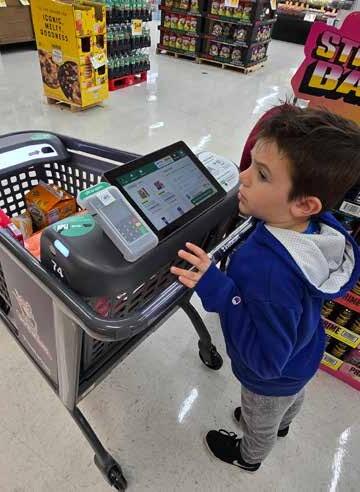
parking restrictions are in place now through March 1. Between 12 a.m. and 6 a.m., vehicles are not allowed to park on city streets. Kaysville City asks that residents please make sure their vehicles are off the roadways to allow plows to safely clear the roads (they are certain you don’t want to receive a Christmas card from the Kaysville Police Department this year). Citations will be issued whether it snows or not.
The Kaysville City Public Works team is dedicated to keeping roads safe throughout the winter season. They work to remove ice from roads as quickly and safely as possible to ensure smooth traffic flow across the city, with a strong focus on maintaining access for emergency services. Snow removal prioritizes primary roads with the highest regular and emergency traffic, and the number of plows and type of materials used are adjusted based on weather conditions.
Did you know that you can track city snowplows in real time during snowstorms? Visit Snow Plow Map – LIVE | Kaysville, UT to view. Snow removal is a challenging task, requiring Public Works employees to work long hours salting and plowing streets – often during the worst weather conditions, early mornings, and late nights.
Kaysville City Ordinance prohibits obstructing travel on public sidewalks. Property
By Cindi Mansell | c.mansell@mycityjournals.com
owners are responsible for removing snow from all sidewalks adjoining their property. Clearing snow and ice from sidewalks is essential for resident safety. It is also illegal to shovel or blow snow onto the street. City Ordinance prohibits pushing, blowing, or depositing snow, leaves, or other debris onto the street, as this can create hazards by freezing and reducing traction, especially after streets have been plowed. This affects not only city crews but also you and your neighbors.
Residents often ask if plow drivers can avoid pushing snow into driveways. While crews do their best to minimize snow on driveways and sidewalks, it is challenging to prevent this entirely as plows move down the street. When plows are not able to plow up to the edge of the curb (prevented by parked vehicles or other obstructions in roadway), this can interrupt both the mail carrier and garbage disposal process.
Finally, if there is a fire hydrant near your home, please keep the area around it clear of snow. Maintain a perimeter of about 3 feet to allow firefighters easy access and ensure there is a clear path from the hydrant to the street.
Contact the Public Works Department at 801-544-8112 if you should see snow or ice control problems.l






Aviation photography is a growing hobby along the Wasatch Front.
In the last few years Audrey Lee, who recently got into the hobby herself, said the interest has spiked following the movie release of Top Gun Maverick.
“It's a pretty big community,” Lee said. “I didn't realize that at first, and when I got here, you know, for me, it was just the way that I could connect with the mission and that I could connect with the aircraft that I was supporting at my day job.”
Lee moved from Connecticut four years ago and works on Hill Air Force Base as a non-uniformed general service member who writes procurement documents for the base.
She considers herself a mentor or “fly on the wall” for kids who come to the base, interested in aviation photography.
“Plane spotting is a pretty big hobby, and we’re really lucky to be at a base that’s more accessible than others,” she said. “But there are definitely still rules to keep in mind.”
She noted that she instructs other spotters that photographing any structures on the base is strictly prohibited as it can leak sensitive information.
Lee’s philosophy is that once the plane passes the fence line, spotters can snap pictures. And they do.
Jackson Wilson dreams of becoming a pilot for the United States Air Force, but if that goal doesn’t take off, he’s ready to pursue his growing passion for aviation photography.
Two years ago Wilson bought his first professional camera, a Canon EOS R10 and fell in love with aviation photography at an airshow since he “liked planes quite a bit.”
But until that point he had only looked at pictures and “scrolled Instagram looking at photos of planes.”
It was the speed aspect that caught his attention.
“I used to really be into cars because they go really fast, I’m a fan of going fast,” Wilson said. “The first time I really went to the airport, I saw a lot of really rare planes there, and I saw a bunch of F-16s taking off, and I thought it was really cool. And then from there… I guess it’s just something about it that I can’t explain.”
At 14 years old he’s building quite the aviation photograph portfolio by waking up early and spending up to six days a week capturing the rarest planes with his camera. He frequents Salt Lake International Airport and various facilities across the state known to have planes nearby.
Wilson said that the appeal of spotting is the excitement and adrenaline of capturing the perfect photo of a speeding aircraft and feeling the sense of accomplishment that comes with it..
By Rebecca Olds | rebecca.o@thecityjournals.com
“I can’t wait to get home and really look at it because usually the screen on these cameras isn’t too great,” he said. “Maybe it’s something you’ve wanted, been wanting to see for a while now, and you just did, and you got a really good photo of it.”
Since Wilson attends online school in Canyon School District and both of his parents work from home, even though he doesn’t have a license he has a ride and the time and flexibility to cultivate his photography skills.
“We’re very free to do stuff most of the time, especially throughout the middle of the week, where they’re most active flying,” he said.
His dream is to take pictures of European and Asian planes and to visit the Royal International Air Tattoo in the United Kingdom usually in June or July.
A new group known as the Wasatch Wingmen was started. It currently has 12 or 13 members – mostly kids Wilson’s age –including his new friend 15-year-old Amden Olsen. Together, they go spotting to capture sought-after aircraft and exchange photography tips and techniques.
Olsen, a Riverton resident, in addition to his time with the Wasatch Wingmen, is part of a non-government military program through the U.S. Air Force for high school students at the South Valley Regional Airport.
He has been into aviation photography for about two years, the same amount of time as Wilson, and recently started his own photography business.
Olsen participates in the Civil Air Patrol to expand his aviation knowledge and plans to become a commercial pilot.
“I just recently decided that I wanted to start preparing myself to get my private pilot’s license, so I joined [the program] to help gain a little more knowledge on aviation,” he said. “I want to go be a commercial pilot for Delta.”
He said the hardest part of spotting and getting the perfect shot is tracking.
“I’ve gotten a lot of practice in tracking the aircraft with my camera and keeping it in frame,” Olsen said. “In my viewfinder on my camera has little focal points, which I use to help. I either try to keep it on the middle one or keep it in between the circle of them.”
At the end of the day, when the spotting is all said and done, it’s really only one good shot that you need.
"Honestly, it feels great,” Olsen said. “It's probably one of the reasons I continue to do it because when you get it… it’s all about getting the good shot, right? So when you get a good shot, most people have physical excitement expressed on their bodies in some way, shape or form.”
But the beauty of photography, he said,


is that you don’t have to have a nice camera to take pictures. He started out with his phone before he upgraded to his professional camera.
“One of the biggest misconceptions about photography in general, especially aviation photography, is that you need a camera,” he said. “Even if you have a phone, you can still edit your photos and they can come out almost as good as a cheaper quality camera.”
While it’s true a phone can snap a picture or video, Lee said the best pictures require specialized equipment.
Lee said that camera gear doesn’t exist specifically for the hobby.
“In the photography world, aviation photography is not really recognized as a type of photography – there's transportation, like cars, and then there’s sports photography, which is very fast,” she said. “But, aviation photography just isn’t something that’s on a lot of camera companies’ radar.”
But she hopes that changes.
“As the community gets bigger, I feel like, they can’t ignore us forever,” Lee said. l

By Kathie Supiano, PhD, LCSW
The holiday season is nearly upon us. This is the time of year when grieving people often feel dread and sorrow about the very events and traditions that formerly brought happiness.
As every grieving person handles loss in their own way, each one of us observes holidays in our own way in time of bereavement. There simply is no one right way to experience the holidays. Some nd meaning in following cherished traditions, and others bene t from avoiding traditions because their associations are now tinged with loss. Some people nd great comfort in being with other people, others prefer solitude to camaraderie. For all of us, how we gather is as important as gathering at all.
Plan ahead for the holidays: The rst step in planning is to listen to yourself….what will help you most at this time? You may have strong memories and powerful feelings. Accept this as normal, but prepare for it. Anticipate the pleasures and the stresses of events, and select those you want to participate in. If you expect to be lonely, arrange supportive companionship. If you can’t bear the thought of connecting with the entire extended family, let the family know of your needs. Be creative and accept support by using distance technology.

Accommodate your plans to your new limits: Most grieving people have signi cantly lowered physical stamina and emotional reserve. Perhaps you can’t get every decoration out this year. Accept these limits as temporary, and good enough for this year. Choose to put your energy into the things that matter most to you.
Accept that the holidays will be di erent this year: The holidays are often lled with unrealistic expectations that may overwhelm you. You may need to revisit your goals and nd a balance between continuity and change. Many people nd a special comfort in establishing a new holiday tradition that honors the memory of the person who died.
Recognize that other family members or friends may have struggles, too: Look for opportunities to discuss your feelings and wishes with others who may also be grieving for your family member. Try to respect their choices, if they are di erent from yours. You all may need to make compromises.
If the holidays have always been hard for you: Use this transition in your life to try something completely new…an untraditional-tradition. Perhaps you have never taken the occasion create a new experience on your own. As challenging as loss can be, it can bring momentum to grow and to try something new.
For all of us, whether the holidays are a time of personal signi cance or not, it can be a season in which we re ect on what we do cherish as we journey through grief.
Kathie Supiano, PhD, LCSW is an Associate Professor at the University of Utah College of Nursing and the Director of Caring Connections: A Hope and Comfort in Grief Program. Caring Connections is a not-for-pro t program that o ers clinician-facilitated grief support groups in Utah.


By Bridger Park | b.park@mycityjournals.com
In a community like Davis County, which is dominated by the imposing Wasatch Front, wildlife are held in high regard. The peace officers responsible for protecting these resources are the Division of Natural Resources’ Conservation Officers, a job held in high regard in outdoor communities. One such officer, assigned to Davis County, is Officer Brooklyn Joseph. Her territory covers the entirety of the county, ranging from mountains to marshes.
Joseph knew very early on that she wanted a career in law enforcement, and her path to that role had been clear from the start.
“I grew up wanting to be a cop, I had an uncle that was a cop and I [really] looked up to him,” Brooklyn said. “I really got into hunting with my dad, and then when I realized there’s a job that combines wildlife with being a cop [I thought] ‘oh this is perfect.’”
Much of Joseph’s career has been driven by a strong desire to serve her country. She began on this path her freshman year of college, when she joined the military, enlisting in the Army National guard as an Aviation Operation Specialist, before deploying to Iraq in 2018 as a door gunner.
“I’ve always had the desire to serve,” Joseph said. “So the guard was a good fit for me.”
She completed her schooling at Utah State University, with an associate degree in criminal justice, a bachelor’s in Wildlife Ecology and Management, and just recently finished her master’s degree in Organizational Leadership, doing her capstone on the role of emotional intelligence with law enforcement leadership.
Originally from Salt Lake County, Davis County was her first choice for as -

signment and in a stroke of luck she was assigned here out of college. She was drawn to the diversity of the county, ranging from the mountains of the Wasatch, to the Marshlands of the Great Salt Lake.
“I think when some people think of Davis county, they think ‘Oh what’s out there?’” Joseph said. “I have a mix of everything – I’ve got the waterfowl, and the big game cases.”
The biggest thing Joseph has come to love during her time as a Conservation Officer, is the people, which is her strongest trait.
“It’s the people I meet, it’s the people I work with, they’re awesome,” she said.
“It’s also members of the public. Checking licenses I can go from a mom with her kids, to an older gentleman who just wants to talk about life and his experiences – everyone has a story.”
You can tell she has a genuine love for the people she’s interacting with, which is an especially important trait for a law enforcement officer. She stays very active in community outreach, and public events. She displays this with the highlights of her career, moments such as taking a veteran on a hunt, and speaking with kids.
“That’s the stuff that means something to me,” Joseph said. “Because that means I’m making a difference.”
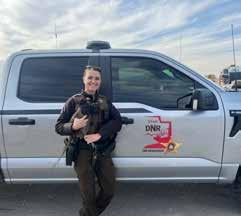
The law enforcement side of her job also plays a huge role. In her most memorable case, Joseph was involved in the first illegal baiting. The state outlawed the practice in 2021, and the perpetrator was caught illegally luring deer with bait.
“It was really important to see that case all the way through,” Joseph said. “To help the court process. It was a new law, and they had nothing to reference. So it sets the standard for how we’re going to handle things across the state.”
At her heart, and one of the reasons she got into the career, Joseph is still a true hunter. Despite working the busy weekends, and openers, she still finds plenty of time to balance her work life with her passion, and spend her falls in the marsh, honoring the tradition she protects.
It’s a challenging, yet rewarding, job that demands a unique blend of skills, but for officers like Joseph, it’s a calling she is proud to answer. l
The Salt Lake Valley Habitat for Humanity and Northern Utah Habitat for Humanity are expanding their reach to serve new communities.
When the Habitat for Humanity chapter serving Weber and Davis counties closed approximately 18 months ago, it left a significant gap in affordable housing support for these areas. In response, the Salt Lake Valley Habitat and Northern Utah Habitat stepped in to divide the region, incorporating Weber and Davis counties into their respective programs.
Under this arrangement, the Northern Utah Habitat chapter will assist Weber County residents, while families in Davis County will be served by the Salt Lake Valley chapter.
By Bailey Chism | bailey.c@thecityjournals.com
“We are excited to serve a broader region and partner with more communities in the greater Salt Lake area. This expansion is a pivotal step toward providing more families with the stability that comes with homeownership,” said Salt Lake chapter CEO Carin Crowe. “We are grateful for the ongoing support from our community, partners, and donors who make this important work possible. With this growth, we will be able to reach even more low- to moderate-income households in need of safe, affordable housing solutions.”
Currently, the Salt Lake Valley Habitat for Humanity provides assistance to families in Salt Lake, Tooele, and Davis counties, but this expansion has not slowed the organization’s momentum. Over the next year, it
plans to begin construction in Magna, where it owns property for approximately 30 new homes. Additionally, the chapter aims to open more ReStores – Habitat’s nonprofit home improvement stores and donation centers – and continue its Critical Home Repairs program, which helps both Habitat partners and other community residents make essential repairs to their homes.
Building homes remains at the heart of Habitat’s mission. To date, 115 homes have been completed in Salt Lake and Tooele counties, and the organization is on track to build between 10 and 20 homes annually in the coming years. This year alone, 16 homes have been built. Over the next five years, the goal is to maintain a consistent pace of constructing 10 homes annually, addressing the
growing demand for affordable housing. Families in Davis County will follow the same process as other Habitat participants. They will complete 225 hours of sweat equity – working on building their own homes – and participate in financial literacy classes. Once completed, they’ll receive a 30year, 0% interest mortgage, allowing them to move into spacious homes designed with room for their children to grow and thrive.
The new homeowners gain more than just shelter. They find stability, build generational wealth, and become part of communities where their children can make friends and families can flourish.l

By Bridger Park | b.park@mycityjournals.com
When most people think of poaching, they likely conjure up images of the stereotypical, Elmer Fudd-esque character, who shoots at everything that moves. People think of it as an almost old world problem. Poaching today is still very much alive and well. Poaching comes in all shapes and sizes, anything from killing a trophy moose with no tag, or a deer outside of your unit, to shooting over your limit of greenheads, or taking more than two fish from your local pond.
This hunting season has brought on its fair share of poaching cases and a spike in high profile cases.
“It takes all of us,” Davis County’s DWR Conservation Officer Brooklyn Joseph said. “The truth is there just isn’t enough of us. We need the public to get involved, and to report what they’re seeing.”
In the beginning of the season alone, from Aug. 1 to Sept. 9, DWR reported over 100 illegally harvested animals, including: nine deer, six elk, two moose, one bear, one pronghorn, 60 fish, and 25 other species of protected wildlife. Many of these animals were shot, and left to rot, which are the most heinous of offenses. A pronghorn was shot and left in Emery County earlier this season, at a time in which no hunts were active. Early in October a buck deer was shot near Bears Ears National Monument, when the only active hunts were any-legal-weapon elk hunts, and another near Enterprise was killed with a firearm in archery season. Officers discovered a cow moose this September, when its tracking collar gave a mortality signal. The cow was poached during a bull only hunt. The odious thing about instances like these, is no attempt was made to harvest antlers, let alone meat, and these cases are just a sample size.
So, what do you do if you come across poaching, or suspicious activity?
“Having a license plate number will lead us to the individual, so we can interview the person and start investigating,” DWR Capt. Chad Bettridge said. “Other helpful details include the type and color of the vehicle the person was driving, how many people were involved and a description of what you saw. And, if you can give us a GPS coordinate, that can guide us quickly to the area where the possible violation occurred.”
If you come across an individual poaching, it is crucial that you help establish an identity. Getting a license plate number is the first step. If you can, getting a description of the car can help, especially if you don’t have the ability to get a license plate. It is important to do this in a safe manner, and always avoid confronting the individual.
The next step, and the one way responsible hunters can fight back, is to report poaching through one of the DWR’s four channels. You can text officers at 847411, or call the Utah Turn-in-a-Poacher hotline at 1-800-662-3337. Other options are either using the UTDWR Law Enforcement app, or reporting through the DWR website.
Poachers cast an ugly shadow on the hunting community. They get a lot of publicity, and help the anti-hunting case. There is a reason America has seen so much success in the framework of their conservation: the regulations. It’s easy to dismiss situations you come across as none of your business, or to not find it worth reporting. The truth is, it is the responsibility of every conservationist to take action, especially if you want your kids to grow up in a world where they can enjoy the same activities. l
Although every death is as individual as every life, knowing a few common experiences can help families endure the decline and prepare for this passing from life. Although it is hard to predict the exact time, certain changes in health and behavior can help give an idea. Jordan McLaughlin, a registered nurse, helped take care of her grandmother for the last five years of her life. “About a year before she passed,” said McLaughlin, “everything became harder, slower, took more time, she ate less, she drank less and she could help herself less.”
Activities are often avoided as death nears. Where once a daily shower was a part of everyday life, her grandmother struggled to do this basic chore. She required some assistance to do it well and as she declined, had to be supported to avoid falling. Sometimes the twice weekly shower would take all the energy she had for the day. Refusing physical therapy and avoiding most activities and sometimes not even getting out of bed for the day became the norm.
“It was interesting watching the things that used to bring her joy change,” said McLaughlin. “She didn’t really feel like her chocolate milk, or she didn’t want to eat bacon anymore, even though she used to really love those things.” She didn’t even like Coke anymore, which was her go-to drink for decades. The physical system just slowly
By Kerry Angelbuer | k.angelbuer@mycityjournals.com
slows down and eventually it stops altogether. The goal is not to force food at this point, but rather honor what the older adult wants. Often swallowing can become difficult, so food is not desired. Discontinuing pills that must be swallowed and choosing absorb-inthe-mouth options for the most needed drugs may be an option.
As death approaches the core body temperature can reduce by one or more degrees, or a fever can develop. “She loved her heated blanket because her body didn’t keep her warm anymore,” said McLauglin. “She wanted her heated blanket turned on all the time.” Blood Pressure and heart rate may also gradually decrease, becoming quite low in the final days and hours of life.
Look out for signs of pain in older adults. Arthritis and other injuries may begin to ache more. It can be painful to do simple things, like stand. “She was wiggly,” said McLaughlin. “Her hips and knees would hurt and become weaker and she might buckle and threaten to fall over.” Giving pain meds can be comforting and liquid meds that absorb in the mouth are available.
Not only does breathing slow but it also takes on a new pattern. Rather than breathing at a regular rate, rapid breathing can be followed by longer and longer periods of no breath. As the ability to swallow decreases, the breathing becomes noisier as it is forced

through the building congestion. McLaughlin thinks this is a really hard stage because she really wants to help, but recognize it is out or her hands and part of the final dance.
An older adult may become confused as they near death seeing and believing things that are not reality. They may become agitated by these fraught situations. Medications are available for this agitation. Eventually, the older adult becomes less conscious, re-
sponding only occasionally until they are no longer speaking. Hearing is one of the last senses to fade. “It was good for family to be there,” said McLaughlin. “I think it’s comforting to not be doing all the scary stuffy by yourself. It’s just a good time to be with your loved one and heaven just feels really close.” l
he kids are flying in for the holidays and excited to be together, but the family home no longer fits your growing brood. Each child now has a spouse and kids of their own. Your challenge is finding a place for everyone to sleep.
Options abound if you happen to be one of those lucky people with an unlimited budget. Why not buy a McMansion? Rent a massive Airbnb in the mountains. Add a wing onto the back of the house for $100,000 that will only get used once a year.
For those with big hearts but modest means, here are some inventive solutions to make room without breaking the bank.
• Food storage rooms and walk-in closets can be the perfect spot for a baby to sleep.
• Couches are great for kids already sleeping in beds who won’t roll off. Or put pads on the floor by the couch in case they do fall off.
• Buy an inexpensive bunkbed or two and double your bed space without needing additional square footage.
• Purchase a kiddie tent for the family room. Smaller children will be thrilled.
By Gail Newbold | g.newbold@davisjournal.com

• Air mattresses can be made more comfortable by placing a foam pad on top. So can sofa beds.
• Scope out your camping gear with a new eye. Do you have a camp cot? Sleeping pads? Perhaps even a small pup tent for older children to sleep in?
• Maybe some parts of your basement are unfinished but could be utilized with
some inexpensive purchases. One family with a large unheated storage room bought thermal room dividers from Amazon and hung them from the ceiling to make a small, warmer space for a toddler. They used a safe temperature-stabilizing space heater, carbon monoxide alarm, baby monitor and even a
portable air filter.
• Consider renting a small Airbnb in your own neighborhood to house just some of the overflow.
• An inexpensive option is booking a nearby hotel, but Christmas is a busy time, so book early. In mid-November, the Best Western Plus Cottontree Inn just off the 2600 South freeway exit in Bountiful was offering a room with two queen beds for $124 per night over the holidays. An extra bonus is its heated indoor pool.
• Perhaps a friend or neighbor is leaving town for the holidays and would appreciate having one of your adult children housesit, water plants, and feed their pets.
• If visiting children have in laws in the area, suggest splitting the time with them and rotate your kids in and out.
• Offer to help with transportation.
• Pay for any additional lodging since your children are most likely already paying high airfares for holiday travel.
• One last and probably not very popular option is to sacrifice your primary bedroom to your adult children and sleep on a couch or even a nearby hotel, which allows you to escape the noise and chaos for a while. l
By Peri Kinder | peri.k@thecityjournals.com
Holiday shopping often brings loads of stress as you try to find the perfect gift for that special person. In Davis County, there are many shops, boutiques and specialty stores where you can find unique gifts at affordable prices. Here are just a few fun places to visit during the Christmas season.
This whimsical, unique shop on Bountiful’s Main Street has something for everyone on your list. Beauty and body care, fashion accessories, books and journals, fun treats and kitchen items are just a few of the items available in the shop. If you’re hosting a party, Whisperwood Boutique offers tasty dip mixes, a variety of salsas and Ariston olive oils and balsamic vinegars in dozens of flavors. You’ll also find cute pajama sets, seasonal decor and lotions, soaps and car diffusers from Taylor’s Provisions. Browse products at Whisperwood. Shop.
This small boutique winery offers locally-made non-grape fruit wines (meads and melomels), hard apple ciders, specialty spirits

Make holiday shopping a fun adventure by visiting local shops and boutiques in Salt Lake County. (Stock photo)
and brandies. With the state’s smallest commercial still (25 gallons), The Hive Winery considers itself a “nano” distillery, producing less than 30 barrels annually. Its award-winning items include limited-time seasonal products like cranberry wine, blackberry stinger cider, peach cobbler wine and Sunny’s Pear Licker. The Hive Winery offers tastings, tours, classes and recipes at TheHiveWinery.com.
If you’re looking for something truly beautiful for the ones you love, Fadel’s Fine Jewelry is a must-stop shop. Founded by Dave Fadel in 1986, the jeweler’s mission is to offer competitively priced, stunning and unique jew-
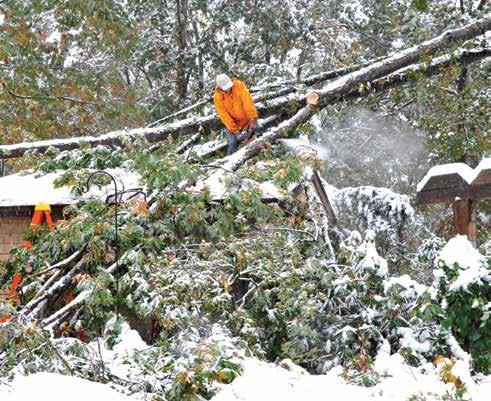
elry pieces. The store features bracelets, necklaces, rings, earrings, pearls and estate jewelry in a range of designs. Wearing statement jewelry is a way to reflect the wearer’s individuality and style. Dave can help you find the perfect piece or help you create a custom-designed item. Jewelry repair is also available. Discover more at FadelsFineJewelry.com.
Locally owned and operated, Mrs. Cavanaugh’s hand-crafted chocolates have been a holiday staple for more than 50 years. With several stores along the Wasatch Front, you can easily find family favorites like toffee, caramels, clusters, crèmes, truffles and fudge. Seasonal products like sandwich mints, chocolate truffle reindeer and white chocolate caramel snowmen are fun to have available for neighbors and friends. The North Salt Lake factory offers tours Monday through Saturday, by appointment only. For more information, or to shop online, visit Mrscavanaughs.com.
With a commitment to supporting local

talent, Locals is a popular stop for people looking for handcrafted products from crafters, creators and artisans in the area. Locals has unique seasonal decor and holiday items, plus greeting cards and gift bags. There’s also a fun selection of jewelry, lotions, clothing, candles, soaps and accessories. The store carries favorite brands like Utah Roots caps, Klani bracelets and Delectable Additions gourmet food mixes. Learn more at LocalsGifts.com.
If your loved one has a gluten intolerance or allergy, Sweet Cake Bake Shop is a dedicated gluten-free bakery offering amazingly delicious items. After Allison Regan was diagnosed with celiac disease, she was determined to create gluten-free favorites that weren’t dry and crumbly. Her recipes include fluffy cinnamon rolls, soft cookies and bars, flavorful cupcakes and mouthwatering pies. She also creates cakes for any occasion and seasonal favorites. Many of her products are also dairyand nut-free. Visit SweetCakeBakeShop.com for more information.












By Becky Ginos | becky.g@thecityjournals.com
Elementaryclass sizes are an ongoing concern for parents and teachers. Davis School District administrators addressed that when they gave a report to the school board on Oct. 15 about enrollment, FTE Ratio (Full Time Equivalent) and class sizes.
“It has a huge impact on our teachers and our staff and our schools,” said Board President Liz Mumford. “But it also affects our student achievement and the overall culture in our school district.”
This is something that comes up in the fall, she said. “As you know people check their kids into school and have different class sizes sometimes than they anticipate.”
“We look at staffing and that begins in the January through December time frame,” said Budget and Planning Director, Steve Snow. “So in that time frame we’re meeting with cities talking about their new developments. In the makeup of those developments we also look at what type of developments. Is it a single family dwelling? Is it apartments or condos?”
Snow said they look at that because it’s a different percentage of students that will come from that depending on which type of housing there is. “In the range of October through January we start gathering the October enrollment information. We look at the births because those are the best predictor

for who’s coming five years from now.”
The next one is February through April, said Snow. “Now we're talking about projection time. We have what has happened and we’re trying to predict who’s coming in the fall. So this is, get out your crystal ball and make your best guess and don’t mess it up and we meet several times.”
Snow said in elementaries they look at
every single classroom. “When we’re doing this we need to look at how much staffing we’ll need for a whole school, not per classroom. We’ll give it to the principal to make a decision after they’ve looked at their areas and then when we’re done we look at the areas of concern at each school then we’ll send letters to the principals saying ‘here's your total staffing.’”


“How do we consider splits?” said Elementary Director, Ruthanne Keller. “Well if a grade level has large numbers we look at the one before and the one after to see if they’re smaller and so we can combine those from each class of students into one class. So that takes away one teacher and gives a smaller grade level.”
Keller said there are pros and cons to a combination or split class. “In a split class, we’d like to take kids that are independent learners in each grade level. Sometimes they’re just kids that are better academically and that hurts the other classes because you look at those kids a lot as examples.”
Then there are those that have a calming influence in the class, she said. “You can’t teach two curriculums if you’ve got kids that are not behaved or can’t work independently. Unfortunately sometimes the split classes don’t have that advantage.”
One of the benefits of a non-split classroom is students are with their same aged peers, she said. “Teachers also have the ease of teaching only one curriculum. But when they’re in a combination it’s nice I think to make friends with other grade levels.”
“I’m hoping to tee up a little bit of the National Research,” said Superintendent Dan Linford. “I want to hit on this, the Star Study is kind of the ultimate class size study. It did find that there was a significant difference in student achievement as it relates to class size. Students in smaller classes outperform students in larger classes by an increase that’s equivalent to about three months of extra schooling four years later. So they maintained that extra knowledge longer.”
The constant variable in all of research is one teacher, he said. “The research tells us the reason why this class outperforms this class is almost always that teacher in the front of the classroom. This is where reducing class size lands. This is where it lands on the scale of how it affects student learning.”
Linford said that to meet the district’s primary mission, teachers have to feel like they’re effective. “The number one thing was teacher efficacy, right? At the end of the day teachers and teams of teachers have to believe that the work they do, their preparation, their skills all of those things matter for student learning. That they believe that all students can learn. That’s the piece that we spend a ton of energy on, because we’re going to get huge returns on that.” l
By Tom Haraldsen | t.haraldsen@mycityjournals.com
It’seasy to assume that when you’re the son of legendary TV meteorologist Mark Eubank, it would be natural to follow in his footsteps. For Kevin Eubank, KSL’s longtime meteorologist and native of Bountiful, that wasn’t the case.
“I'm the sixth of seven children in my family,” Kevin Eubank said, “so most of my siblings are older than I am. My father had a meteorology company called Weather Bank, and a few of my older siblings actually worked for my dad's company. And so as a young kid, I knew my dad did weather and that he did radio shows in the morning from our home, and I saw him on television, but I had zero affinity or interest in the weather other than just, you know, basic family conversation.”
Kevin Eubank went to Oak Hills Elementary, Millcreek Junior High and Bountiful High, from where he graduated in 1993. He said weather was always a subject of conversation in their home.
“So I was fully exposed. I just didn't have any interest in pursuing that as a career,” he said. “And in fact, as I got into my teenage years, it was actually almost the opposite. Really. It was kind of a turn off, because my dad was so passionate about it that it was something I didn't want anything to do with.”
That changed when Kevin Eubank was serving an LDS mission in Mexico due to a tragedy he experienced.
“I served in a very rural area, and there was a dry wash that went through the area that kind of divided the community, and there was a flood that happened because of a large storm,” he said. “There were two little girls that were playing in that ravine, and a flood came and they died. And I remember for the first time in my life asking, number one, how did that happen, and number two, why didn't anyone tell them to get out? That's where it started to click that that's actually what meteorologists do. They talk about the weather, they warn people, they help people know what's coming. I always thought meteorologists studied the weather, which they do, but they study it so that they can then go and help people.”
When he got back from his mission, Kevin Eubank talked to his father and told him of his plan to get into the business. Surprisingly, Mark Eubank wasn’t excited.
“He told me it was a difficult business,” Kevin Eubank recalls. “He knew how competitive it was. So he kind of just said, ‘Hey, Kevin, don't judge my career as the standard of how TV meteorologists careers go.’ He'd been in Salt Lake City for almost his entire career. I thought he made it look easy, but he was like, ‘It's not easy. It's not always fun. It's very challenging.’”
Kevin Eubank knew it was what he wanted to do, so with his dad’s help, he

made an audition tape at KSL, where Mark Eubank had moved after leaving KUTV, but KSL management wasn’t interested in hiring Kevin Eubank full time. He did some Saturday morning shows as a fill-in for Kent Norton for about eight weeks. After that, he reached out to the other three TV stations in Salt Lake City looking for an opportunity.
“I met with management at channel 2 (KUTV), and they weren't interested either. But a couple weeks later, they called and said, ‘Listen, we need somebody to fill in. And we just need them to fill in for two days in the morning and noon show. So I said I’d do it.”
The first day went fine, he said, but his second day was Aug. 11, 1999–the day the tornado that went through Salt Lake City.
“I was on air at 12:42 in the afternoon when it hit,” he said. “Instead of going on air for three minutes, I was on air for almost three hours, talking about the tornado and what happened and how it all happened.
Sterling Poulson was in the middle of it downtown, and he was reporting from the field, and it just gave me a lot of incredible exposure. The next day, the vice president of the TV station invited me into his office and said, ‘Hey, I'm sorry I messed up. We want to hire you to do the weekends.’ And that's how it started.”
He worked at KUTV for five years, left for a year to work with Weather Bank, then joined KSL in 2007. He now heads a five person weather team at KSL as the lead meteorologist, and said he feels blessed to work with his fellow forecast experts.
“My family still jokes to this day that it took a tornado to get me a job,” he recalls. “The truth was nobody was interested. Here, you had Mark Eubank, who was an institution in the state, who was an incredibly great meteorologist, respected among peers and on television. And then you had little Eubank Junior coming up and no credentials, no education, no anything. More than one station
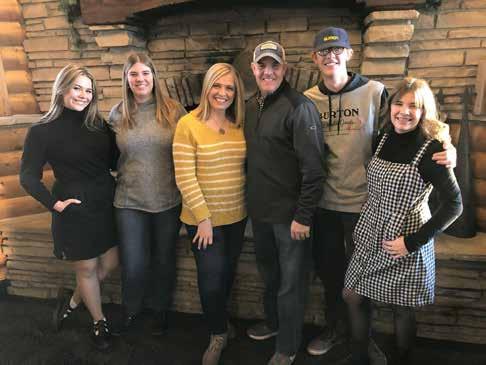
said, ‘We already have a Eubank in Salt Lake doing the weather. He's really good at it. We don't need two.’ That was a motivation to me to keep moving forward. The opportunity came and it has been great ever since.”
One Eubank tradition that viewers have loved for decades is the snow coat, something Mark Eubank introduced at KUTV.
“He was on the news with Bill Marcroft, who was a sports legend, and my father had a kind of a bone colored, light colored sport coat, and he would wear that and not ever thinking anything of it,” Kevin Eubank remembered. “It was Marcroft who told my dad that whenever he wore the light jacket, it snowed. So he started to wear that lighter coat and he replaced it with a white coat, but his own rule was that there needed to be at least a 1-inch storm in the Salt Lake Valley.”
The coat became a popular topic of discussion among viewers who had mixed reactions.
“Skiers loved seeing it, while those who worked outside or had long commutes hated it,” he said with a smile. “It’s a love-hate relationship with the coat, but it’s become an expectation. And it's become more of a responsibility than I ever thought. If I’m wearing the coat, there needs to be at least an inch of snow on the valley floor.”
Kevin Eubank and his wife Jana have four children, none of whom have a desire to make it a third generation thing.
“I think they're like I was when I was their age,” Kevin Eubank said. “They understand what dad does, they respect what dad does, but they don't have the yearning towards broadcast meteorology. And the truth is, our business is changing. Television is
changing so dramatically that while I believe there will always be a place for meteorologists and on-air meteorologists, it's going to be different, already different, and it's going to continue to evolve. So my kids are great. They all are all grown and graduated from high school, and most are done with college and other things. They all live here in Utah, but no, none are pursuing meteorology as a career.”
Kevin Eubank is under contract with KSL for several more years. He and Jana are active in their faith and hope to someday serve a church mission together. For right now, he’s happy with where his professional life is focused.
“I'm 49, so I have time in front of me, and I love what I'm doing,” he said. “As long as it continues to be fun and I continue to have the opportunity to do what I do, I will continue.” l




By Bailey Chism | bailey.c@thecityjournals.com
Whenpeople picture a medical examiner’s office, they often imagine scenes straight out of a CSI show—investigations, crime and death. Dr. Dierdre Amaro understands how her office might be perceived by those unfamiliar with death investigations.
Her workplace features the expected fluorescent lighting, long hallways that connect coolers with the capacity to hold up to 12 to 70 bodies, and a noticeably strong odor. But beyond the clinical atmosphere, there are also some quirky touches: a full-scale X-ray machine affectionately named Larry, adorned with large googly eyes; a model skeleton with its own employee ID; and a spreadsheet to divide the responsibility of watering the office’s many plants placed on high window sills.
As the leader of the Utah Office of the Medical Examiner (OME), a position she’s held since this summer, Amaro oversees the investigation of all sudden, unexpected, violent, suspicious or unattended deaths in the state. The office conducts postmortem exams and autopsies to determine the causes and injuries behind these deaths. Recently, the OME opened its doors to news organizations to help the public understand the important role it plays in Utah.
“In some places, working as a medical examiner means you deal with death investiga-
tions, and everything else is secondary,” Amaro said. “In Utah, however, the work we do is for the benefit of the living. We still face death every single day, which some people think desensitizes us to it. In reality, the exact opposite is true; because death is a part of our jobs, we find meaning and purpose in the unique opportunities we get to serve, protect and support the living.”
More than 90% of the office’s work involves collecting data that’s then reported to the U.S. Centers for Disease Control and Prevention (CDC). This data helps improve the health and safety of living Utahns.
“Death certificate data becomes a reflection of the health of a community,” Amaro said. “We are literally seeing the terminal results of public health problems here. Drugs? That’s a problem that’s killing people. We see that here. And if we can understand what is killing people in our community and why, then maybe we can figure out how to prevent that. And that is what we are about, not just little goblins under the bridge.”
While TV shows like CSI may glamorize the field, Amaro points out they often miss the mark. Most people assume the office’s work is focused mainly on homicides, but in reality, the majority of cases handled by the OME involve natural deaths and accidents.
As the days grow shorter and the cold settles in, many of us start to feel the weight of seasonal depression. If your struggle with depression includes low energy, lack of ambition, or a sense of isolation, you’re not alone—and we can help.
• NOT medicine
• NOT shock therapy
• NOT invasive
• IS safe and effective

• IS COVERED by most insurance








free HIPAA compliant PHQ9 self assessment test.
Our Psychiatrist is available now, don’t wait to get help.



Natural deaths might include older individuals who haven’t seen a physician in a long time and suddenly pass away, or young athletes who unexpectedly collapse on the field due to undiagnosed heart conditions. Accidents, such as car crashes and drug overdoses, are also frequent.
So how do investigations work? Utah’s system is distinct in comparison to states with elected coroners, who may not be required to have medical or forensic pathology training. In contrast, Utah’s centralized OME is staffed by highly-trained, licensed physicians.
According to the CDC, the leading causes of death in Utah are heart disease, cancer, accidents, Alzheimer’s disease, COVID-19, stroke, chronic lower respiratory diseases, diabetes, suicide and nutritional deficiencies. Amaro said the office’s cases generally follow a similar pattern to national statistics, with natural causes of death being the most common, followed by accidents, suicides and then homicides.
overdose and prevention efforts.
Suicide is a particularly prevalent cause of death the office encounters. In 2022, Utah ranked seventh in the country for suicide mortality rates. The team of epidemiologists helps make sense of this data.
“We can tell you this person died by suicide with a gun, but (epidemiologists) can tell you what were the circumstances around that death,” Amaro said. “So if we figure out the why, why are so many people in Utah killing themselves, then maybe we can fix that, and that’s what motivates me, and that’s what motivates most of us in this office.”
A job at the OME is heavy, both physically and emotionally. Staff are alerted about 15 to 20 times a day via a doorbell that signals the arrival of a new decedent. Despite the regularity, the staff never takes their responsibilities lightly.

Visit neurostar.com for full safety and prescribing information.
TMS is like physical therapy for the brain. It uses magnetic pulses, similar in strength to MRI, to reignite dormant connections in the brain and give you control of your depression. With NeuroStar, you can live on your terms

10437 So Temple Dr., Suite 200 South Jordan, UT 84095 385-412-9215
NeuroHealthUtah.Com
Outcomes Registry
“Going to someone’s house on the worst day of their lives, being able to really handle their emotions with care and really have empathy for those people on that worst moment, is really important to me,” said Chief Medical Examiner Investigator Cory Russo. “And then to be able to come back and do the follow-up work, whether that’s positive identification after someone has been missing for years, that is so rewarding, to be able to bring closure to families.”
In addition to 12 forensic pathologists, some with specialties in pediatrics and neuropathology, the OME team includes forensic epidemiologists who focus on suicide, drug
The facility also houses a space dedicated to DonorConnect, a nonprofit that connects tissue donors with recipients—such as those needing veins, long bones, skin, or corneas— through family authorization. According to Morgue Operations Manager Brandon Callor, this system ensures that viable tissue is recovered efficiently, without the need for lengthy travel that could diminish donation potential.
“There's a window of time in which they can still recover those tissues,” Callor explained. “Whereas in other states, those tissues may have to travel hours, losing a lot of potential donors.”
Though the work can be emotionally taxing, Callor finds purpose in his role. In addition to his duties as a morgue manager, he’s also a social worker. He interviews families who’ve lost loved ones to suicide or drug overdose, looking for ways to help beyond the autopsy suite, including advocating for policies that address public health risks and supporting grieving families.
“I think I can’t feel sorry for myself for very long when I realize there’s so much suffering out there,” Callor said. “And so, being able to be involved in the aid of someone else’s suffering just helps me to gain that perspective and think outwardly.” l





























special Kid Scoop Thanksgiving page is designed for you to do with a friend or family member. So find someone to share the fun!
Have your partner use a RED crayon and you use a BLUE one. Which turkey will reach the finish line first? On your mark, get set … GOBBLE!
Who can nd the most turkey feathers on this page in 60 seconds?
Find the turkey that is different.
All of these words start with the letters P-I. Read the clues and work together to fill in the
A heavy musical instrument with keys.
A small cucumber preserved in brine.
A meal packed to eat outdoors.
A person who robs ships at sea.
A platform over water that starts at the shore.
You use a BLUE crayon and your opponent uses a RED crayon. Take turns connecting two dots each time. The person who completes a square gets one point. A square with a football helmet in it is worth three points!
Standards Links: Vocabulary: Identify rhyming patterns and words. Browse the newspaper for 10 words that would make good halves of a rhyming pair. Then have your partner scour the newspaper for words that rhyme with each of the ones you chose. Switch roles and try it again.
Practice saying Thank you in seven different languages! Match the Thank you to the country from which it comes.
Tak (tak)
Gracias (gra-see-us)
Merci (mehr-see)
Kiitos (kee-toas)
Danke (dahn-kah)
Arigato (ahree-gah-tow)
Dziekuje (dsyne-koo-yeh)
TOGETHER CUCUMBER PUMPKIN PARTNER MUSICAL FAMILY TURKEY BRINE SHORE WATER SHARE HOUSE CLUES PIE
Find the words by looking up, down, backwards, forwards, sideways and diagonally.
After dinner, take a stroll around your neighborhood with friends or family members. On this walk, each of you take one of the cards below and cross out items as you see them. First one to black out the card wins!
Friday
The day after Thanksgiving is usually the busiest U.S. shopping day of the year. Imagine you have $100 to spend. Look through today’s newspaper and list what you’d buy. Did your partner choose any of the same items?
Standards Links:
am thankful for …
What people, places and things are you thankful for?
With hundreds of topics, every Kid Scoop printable activity pack features six-to-seven pages of high-interest extra learning activities for home and school! Get your free sample today at:
The Neighborhood (2) KUTV 7 p.m.
Dave Johnson (Max Greenfield) and his family find their new community in Los Angeles to be a significant departure from what they were used to in their small Michigan town. However, their neighbor (Cedric the Entertainer) has some concerns of his own.
Superman & Lois (30) KUCW 8 p.m.
The past four seasons have given viewers a gritty look into the lives of Clark (Tyler Hoechlin), Lois (Elizabeth Tulloch) and twins Jonathan (Michael Bishop) and Jordan (Alex Garfin). However, this series finale may just be our kryptonite.
Tuesday
CMA Country Christmas (4) KTVX 7 p.m.
It’s the gift that keeps on giving as hosts Trisha Yearwood and Amy Grant welcome performers, including Jordan Davis, Lady A, Ashley McBryde, Jon Pardi, Lindsey Stirling, The War and Treaty, Zach Williams and Lainey Wilson, to Nashville for Christmas.
Accused
(13) KSTU 7 p.m.
The season finale of this thrilling anthology series follows defendants as they go through criminal trials, examining how one small mistake can snowball into a horrid series of events from which there is no return. Can the ends justify the means?
Wednesday
92nd Annual Christmas in Rockefeller Center (5) KSL 7 p.m.
If a tree can make it here, it can make it anywhere. The 92nd annual tree lighting in Rockefeller Center jumpstarts the holiday season with spectacular lights, musical performances, star-studded surprises and more. Kelly Clarkson hosts the festivities.
The Summit
(2) KUTV 8:30 p.m.
This season finale answers once and for all which of the 16 strangers finish their 14-day struggle to cross New Zealand’s treacherous Alps in hopes of sharing an equal part of the $1 million split across their backpacks. Manu Bennett hosts.
Thursday
After the First 48
A&E 6 p.m.
A rookie homicide detective in Atlanta uses her own tragic life experiences to help crack the case of a young father who was shot to death. When the case heads to trial, the prosecution depends on a witness struggling with survivor’s guilt.
Matlock
(2) KUTV 8 p.m.
Julian (Jason Ritter) brings Matty (Kathy Bates) onto the case of a young woman who is suing due to severe symptoms brought on by a clinical trial. Then, at the firm’s annual holiday party, Olympia (Skye P. Marshall) learns something about Julian’s past.
Friday
WNBA Expansion Draft: Golden State Valkyries
ESPN 4:30 p.m.
New WNBA expansion team the Golden State Valkyries will select one player from each of the 12 existing teams to build their new club during this expansion draft. As part of the proceedings, each team names six protected players who are off limits.
S.W.A.T.
(2) KUTV 7 p.m.
With two episodes left until the show’s 150th episode, can Daniel “Hondo” Harrelson (Shemar Moore), leader of the LAPD’s S.W.A.T. unit, keep his loyalties in check? With lives at stake, Hondo needs to properly balance these some times-opposed loyalties.
Lopez vs Lopez (5) KSL 8:45 p.m.
George (George Lopez) puts aside his feuding with daughter Mayan (Mayan Lopez) to settle a feud with Jolly Old St. Nick that stretches all the way back to George’s childhood. Meanwhile, Mayan tries to find the perfect gift for Chance (Brice Gonzalez).
Monday
(4) KTVX 8 p.m.
Press Your Luck
2024 MLS Cup (13) KSTU 2 p.m.
After a grueling playoff bracket, it comes down to the remaining two teams to compete for the top prize in Major League Soccer, the MLS Cup. With defending champion Columbus eliminated in the first round, a new champion is guaranteed.
National Lampoon’s Christmas Vacation
AMC 6 p.m.
Clark Griswold (Chevy Chase) wants to have the perfect family Christmas. From decorating the house to getting the right tree, everything looks great until Cousin Eddie (Randy Quaid) and his family show up unplanned and his holiday bonus gets downsized.
Rachael Ray’s Rebuild
A&E 9 a.m.
Rachael Ray and Anthony Carrino team up to help families rebuild their homes following disaster in this heartwarming reality show. This time, Ray and Carrino help the Thomas family rebuild their two-story house after it was levelled by a F3 tornado.
2024 World Champions Cup (4) KTVX 11 a.m.

The final event of this PGA Tour sanctioned event airs tonight, broadcast live from The Concession Golf Club in Bradenton, Fla. All three of last year’s captains return, including Jim Furyk, who led Team USA to a win at last year’s inaugural tournament.
7 p.m.
Christmas cheer is nowhere near the top of mind when Robyn (Queen Latifah), Marcus (Tory Kittles) and Miles (Stephen Bishop) find themselves in the middle of a hostage situation after the local hospital gets taken over by a
By Jay Bobbin TV Media

If you’re a Primetime Emmy winner whose fellow-winner wife has the title role in a hit series, it’s probably just a matter of time until you appear in that show.
So it is for Michael Emerson, who joins spouse Carrie Preston (“True Blood”) in a recurring role in CBS and Paramount+’s “Elsbeth,” starting Thursday, Dec. 12. He plays Milton Crawford, a judge from a storied family who takes his place in the legal community — and, from his view, in society in general — extremely seriously. Inevitably, that makes for some interesting encounters when he crosses paths with attorney Elsbeth Tascioni (Preston), who can seem flighty while harboring her own keen mind for the law as she works with the New York City Police Department.
Working on “Elsbeth” reunites Emerson with executive producers Robert King and Michelle King, for whom he acted in the series “Evil,” which started its run on CBS and concluded on Paramount+. It’s a professional reunion for Emerson with his wife as well; he met Preston when they were in an Alabama production of “Hamlet” — they also did a staging of “Love Letters” later — then she played his mother in flashbacks in ABC’s “Lost” and his ex-fiancée in CBS’s “Person of Interest.” He was also in an episode of her TNT show “Claws,” and they made the movies “Straight-Jacket” (2004) and “Ready? OK!” (2008) together.
Imagine if WHAMMYs could show up during the holiday season, waiting for just the perfect time before striking after players receive the best gift ever. No need to imagine as a brand-new holiday-themed episode of “Press Your Luck” brings three contestants to the verge of tears Monday, Dec. 2, on ABC.
Emerson earned the second of his two (to date) Primetime Emmys for “Lost,” in which he played Ben Linus, the leader of a group on the island where plane-crash survivors were stranded. Eight years before that, he won his first Primetime Emmy for another ABC show: “The Practice,” in which he guest-starred as a serial killer.

Near the twinkling Christmas trees, pine-scented candles and brightly-wrapped packages, most homes in Utah display a Nativity scene. It might be made with Star Wars characters or garden gnomes, but it usually includes wise men, shepherds, Mary and Joseph, and an angel hovering near Baby Jesus. If you have children, the crèche could also include stuffed dinosaurs and a Barbie.
It’s a peaceful tribute to the beginning of Jesus’s mission, right before the dastardly King Herod (threatened by the prophesied birth of a new king) proclaimed that every male child under 2 must be put to death. (I’ll bet he was a blast at holiday parties.)
Being warned by an angel, Mary and Joseph fled with toddler Jesus to Egypt where they lived for several years.
But what if the story had been different? What if the Holy Family arrived on Egypt’s border, where someone had built a big wall? What if the Egyptian border czar said, “Nah. We don’t like refugees. They ruin our economy. Go back where you came from.”?
The New Testament would be a lot shorter.
Utah has more than 300,000 refugees and immigrants living in the state; almost 9% of the population. Maybe we could
Peri Kinder
Life and Laughter

consider this percentage of immigrants a tithe offering where we dedicate ourselves to treating them with love and respect, and not actively try to evict them from the inn.
Refugees are survivors of wars, often fleeing for their lives, leaving everything behind, exactly like Jesus’s family. Immigrants want safety for their families and dream of American opportunities. Didn’t we learn in church we’re all children of God? Maybe I misunderstood.
Utah is a shining example of how to assist these populations. There are programs to help refugees get jobs, learn English, finish school and raise their families. Many immigrants own businesses, pay taxes and contribute to our healthy economy.
But a large faction of the United States agrees mass deportation is a great idea. We can have a country without immigrants or we can have a strong economy. We can’t have both.


Unfortunately, brotherly love doesn’t fit today’s immigration narrative which is that refugees are ruining the country. Words like “diversity” and “inclusion” have become MAGA kryptonite. Have we forgotten Jesus taught that loving each other was one of the greatest commandments? Was there a disclaimer I missed that excluded people who weren’t born in America?
If Jesus was here, he’d be flipping tables and fashioning cords into a whip. He would call us hypocrites for not showing compassion to those who are suffering. Instead, we offer harsh judgment, condemnation and close our communities to shelters. Who are we?
There’s a story of a family who was very hungry. The grandmother took a big cooking pot into the front yard, placed it over a fire, filled it with water and plunked a stone into the pot.
Neighbors asked what she was making. “Stone soup,” she replied. Soon, everyone wanted to add something to the soup. One person brought carrots, another brought chicken. Someone added pasta. Yet another brought spices and salt. In no time at all, they had a big pot of soup to share.
In many ways, society is breaking. Rules and common sense seem arbitrary.

People want to pick ingredients out of this huge melting pot of America, this pot of soup, as it were, and toss them away. Immigrants add flavor to our communities. They add variety and culture and spice. If you take out all the ingredients, you’re left with a pot of hot water and a heart of stone. l






Taxpayers and retirement-focused investors have plenty to be concerned about over the next few years.
Economic uncertainty, high inflation, and potential policy changes could bring more legal and economic change.
In addition to this, many of the provisions in the 2017 Tax Cuts and Jobs Act will sunset after 2025.
• There is potential for tax increases, particularly for high-net-worth Americans.
• Capital gains tax rates could increase to match ordinary income rates, rather than topping out at 20% as they do now?
• America’s national “debt hangover” could mean other taxes could increase to generate more revenue for the U.S. government3
That means it’s more important than ever to make sure that you’re taking advantage of every tax edge that you possibly can this year. Acting now could be crucial because you might not have the ability to seize these opportunities in future tax years.
Fortunately, there are strategies that you can capture right now to make sure you don’t pay more than your fair share in taxes. But you’ve got to act quickly, because some of these opportunities may not be around forever.







